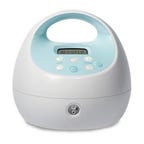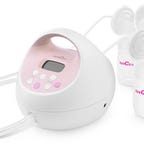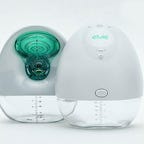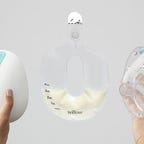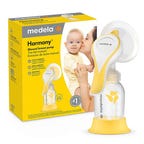Best Breast Pumps in 2022
These are the best breast pumps to buy right now.
Our Picks
A proper breast pump is an absolute necessity for any parent who is breastfeeding. You don't always have an opportunity to breastfeed directly, and a breast pump will help keep your low milk supply flowing in the meantime. It can also help to increase milk production overall, and allows you to stock up on breastmilk for when you're away. It's also a great way to feed if you've got a baby who can't or won't latch, and the strong, even suction can prevent clogged ducts.
There are a variety of breast pumps to choose from to assist you in breastfeeding, ranging from hand-held manual models to hospital-grade breast pumps you can rent. Up until a few years ago, there was little innovation in breast pumps, but newer models are wireless and rechargeable and some even fit under your clothes. You should talk to your lactation consultant about selecting a high-quality, hospital-grade breast pump for exclusive pumping, taking into account your health condition and needs.
Under the Affordable Care Act, health insurance plans must cover breast pumps. However, if you're on an older plan, you might not have coverage. Whether you're paying out of pocket or not, you'll still need to pick out a model that works for your needs.
Which leads us to figuring out which breast pumps are worth your money and time. I surveyed the working parents at CNET for their recommendations, which also happen to be some of the most popular models sold at Target, Buy Buy Baby and Babylist. Check out the best breast pump picks below.
Portable, rechargeable and whisper-quiet -- those are the promises of the Spectra S1 Plus, which make it widely popular among parents and medical pros. After talking to many parents who breastfed, the Spectra breast pump stands out as a clear favorite. Former CNET Editor Vanessa Hand Orellana praised it for being powerful and efficient, and for the fact you don't have to plug it in each time.
It supports single and double pump and has adjustable suction levels, all intended to mimic the experience of breastfeeding as closely as it can. CNET Senior Editor Karisa Langlo chose it "because it uses a closed pumping system to prevent backflow, which meant I wouldn't have to clean the tube part." This Spectra pump is a double electric pump, and the breast pump parts that come into contact with breastmilk are made with BPA free materials.
If you have the money, or can get your insurance to cover it, the Spectra S1 Plus is the top pick for breast pumps in 2022.
Lower price, but tethered
Spectra S2 Plus
The Spectra S2 Plus has all of the specs and features that make the S1 Plus great, except that it's not wireless. That also means it's cheaper, coming in at just $173.
While most parents I polled picked the S1 over the S2, the S1 is a good pick if you want to save some cash and don't mind being tethered to an outlet while you pump.
Hands-free, discreet pumping
Elvie
While the Spectra S1 Plus allows you to pump anywhere you have privacy, the Elvie wearable pump lets you pump anywhere, period. This all-in-one pump slips into a bra, sits against the breast and pumps discreetly -- the milk collects in 5-ounce washable bottles that snap into the bottom. There are no tubes or wires hanging out of your shirt; everything is contained in the unit. It includes two breast shield sizes: 24mm and 28mm. There are also four 5-ounce bottles, four storage lids and two storage bags.
The Elvie double breast pump is also quiet, so you don't have to listen to an annoying motor or draw any attention to yourself. That makes it easier to multitask while pumping. If you truly want to be hands-free while pumping, or need to pump when you return to work but don't want to be stuck in a room every few hours, the Elvie is for you.
Former CNET Senior Video Producer Ashley Esqueda said that she "hated pumping and it was only bearable when I shelled out $550 for an Elvie." CNET Senior Writer Laura Hautala liked the Elvie because "its flange shape is much less conical than a standard pump, which helps it fit more gently, but it also means the seal breaks more easily if breast compressions are needed (yes this is a thing)."
There are some downsides to the Elvie. The double set is pricey, with a list price of around $550. You might be able to get your insurance to cover part of the cost, depending on your plan. If you want to save some money, you can get a single Elvie pump for $280.
CNET Senior Reporter Joan Solsman tested the Elvie, and pointed out that it's hard to tell if your nipple is correctly aligned for proper pumping and it's hard to see how much breast milk is collecting because the unit sits into your bra. A workaround for that is to use the Elvie companion app, where you can control the pump (there are physical buttons on the unit too) and see the volume of breast milk you're expressing. Still, she noted that often the amount the app showed was higher than the actual amount of breast milk in the bottle.
Travel-friendly covert breast-pumping
Willow
Like the Elvie, the Willow breast pump allows you to pump while cooking dinner, in a work meeting or hanging out with friends without anyone knowing. The unit slips into your bra, so you can wear it under pretty much any outfit. Breast milk flows into sealed mess-free bags that fit inside each pump and are removable for cold storage. You can also purchase reusable containers for $50 from Willow.
CNET's Bridget Carey tried the third-generation Willow at CES 2020 and found it to be life-changing. When she pulled me aside to tell me that she was actively pumping, I couldn't tell at all, and that's the beauty of the Willow. Just like the Elvie, using the Willow means no more sitting in a windowless room or a bathroom stall to pump while you're not home.
Willow has different size options to accommodate a variety of nipple sizes. There's a guide on the company's website to help you figure out what size you need. It also fits breast sizes up to a size H.
Like the Elvie, the Willow doesn't come cheap at $500. It's only available as a set of two, but Willow can help you buy the pump through your insurance, if your plan covers it.
Manual pump for traveling
Medela Harmony
If you pump often, you might want to pick up a manual pump that you can use when you're away from home. Rather than toting around a large, bulky motor, you can easily stash a manual pump in a bag. CNET Senior Editor Carrie Mihalcik recommends the Medela Harmony.
She explains that it's "only one step above actually using your hand to express milk, but it was super easy to carry around and use in a pinch. I used this Medela pump on planes and car rides and carried it with me anytime I needed to be out and about. This Medela pump is not the right tool for a full pumping session, but it can help tide you over until you can get to a more comfortable and private place to pump."
How to shop for a breast pump
With so many models on the market, your first step in shopping for a breast pump is to figure out what kind of model you'll need. First, consider your lifestyle -- do you plan to stay home a lot after the baby is born, or do you plan to travel and go out a lot? Will you be returning to the workplace while you're still pumping? Second, if your insurance doesn't cover a breast pump, you'll want to figure out your budget.
Cheaper models will do the job, but are more likely to have louder motors and require you to be plugged into a wall while you pump. If you spend around $150 or more, you can find a model that's quieter and uses a rechargeable battery so you can move around during a pumping session. Finally, high-end models, like the Willow and Elvie, have the quietest motors and are designed to be as discreet as possible so you can pump while you work or hang out with friends and family.
Manual or electric
Breast pumps fall into two categories: manual and electric. Manual pumps are handy for traveling or to use in a pinch when you're away from home, but you're not going to want to use one as your primary pump. It's just going to require too much work each time when you're already juggling taking care of a baby.
Electric pumps are available as either plug-in or rechargeable units, using a vacuum to mimic a baby's suckling to collect breast milk. Plug-in options are generally cheaper, but require you to be tethered to an outlet while you pump. Rechargeable units grant you much more freedom, so if cost isn't a factor, you're better off with this kind of breast pump.
Tubes or no tubes?
Rechargeable breast pumps are available in roughly two different designs -- with or without tubes. Traditional machines have tubes that plug into the machine to create suction to express breast milk. Milk flows into bottles that are connected to flanges that fit over the breast to create a seal for the suction. You can purchase a special pumping bra to hold the bottles with flanges in place to free up your hands.
This style has been used for decades, but it requires you to remove your top and bra to pump. Newer in-bra pumps, such as the Willow and Elvie, don't use tubes at all -- instead the milk flows directly into a bag or bottle in the unit. That allows them to fit inside your bra and pump without others knowing. However, these models are costlier than a traditional electric breast pump.


